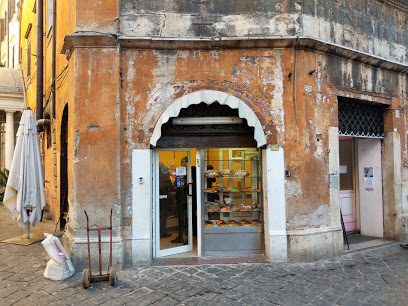About
The neighborhood's historic sweets are still made in a 200-year-old bakery in Rome's Jewish ghetto.
Taking a stroll past Pasticceria il Boccione in the late afternoon may not result in an awe inspiring vision. The window display, set into the rust-colored, dilapidated facade, could very well be completely empty or, at most, contain one or two rounds of left-over crostata. However, these seemingly burnt offerings are not mistakes. Unbeknownst to unsuspecting outsiders, their blackened crusts have been deliberately created to conceal a tasty ricotta and wild cherry filling. Legends tell of how these sweet treats came to be: In 16th Century Rome when Jews were banned from selling dairy products by papal decree, bakers had to think outside the box in order for their customers to enjoy the deliciousness. This clever method continues to fascinate people with its delectable results being just as beloved today as it ever was.


